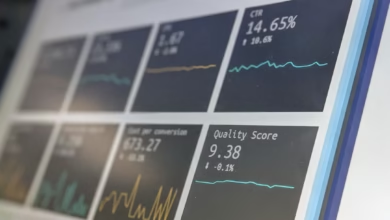Day Trading Demystified: A Comprehensive Guide for Beginners on Strategies, Tools, and Market Insights

Day trading can be an exhilarating way to engage with financial markets, offering the potential for quick profits and the thrill of real-time decision-making. However, for beginners, the journey into day trading can feel overwhelming, filled with a myriad of strategies, tools, and psychological challenges. This article serves as a comprehensive guide for novice traders eager to navigate the complexities of day trading. We will explore essential strategies for getting started, emphasizing the critical role of technical analysis in predicting market movements. Additionally, we will delve into effective risk management techniques that help minimize losses and the psychological factors that influence trading decisions. With the rise of algorithmic trading, we will also examine how automated systems are reshaping the landscape. Finally, we will touch on swing trading strategies for capturing short-term trends and the impact of news events on intraday trading. By the end of this guide, you will be equipped with valuable insights and practical tools to embark on your day trading journey with confidence.
- 1. **Essential Day Trading Strategies: A Beginner's Guide to Getting Started**
- 2. **Mastering Market Movements: The Role of Technical Analysis in Day Trading**
1. **Essential Day Trading Strategies: A Beginner's Guide to Getting Started**
Day trading can be an exciting and potentially profitable venture for beginners looking to navigate the financial markets. To get started effectively, it's crucial to familiarize yourself with some essential strategies that can help you make informed decisions and maximize your trading opportunities.
One foundational strategy is the **trend following** approach. This involves identifying and trading in the direction of prevailing market trends. Beginners can use tools like moving averages to help spot these trends, entering positions when the price is moving in a consistent direction and exiting when signs of reversal appear.
Another important strategy is **scalping**, which focuses on making small profits from minor price changes. Scalpers typically open and close trades within minutes, capitalizing on brief fluctuations. This strategy requires quick decision-making and a solid understanding of market dynamics.
**Momentum trading** is also popular among day traders. This strategy involves buying stocks that are moving significantly in one direction on high volume and selling them when momentum starts to wane. Beginners should pay close attention to indicators like the Relative Strength Index (RSI) to gauge whether an asset is overbought or oversold.
In addition to these strategies, it is essential for beginners to develop a **trading plan**. This plan should outline specific entry and exit points, risk tolerance, and profit targets. Sticking to a well-defined plan can help mitigate emotional decision-making, which is often a pitfall for new traders.
Lastly, using **stop-loss orders** is crucial for managing risk. A stop-loss order automatically sells a security when it reaches a predetermined price, helping to limit potential losses. This is particularly important in day trading, where market volatility can lead to rapid price changes.
By understanding and implementing these essential day trading strategies, beginners can build a solid foundation for their trading journey, enabling them to navigate the complexities of the market with greater confidence.
Day trading can be an exciting yet challenging endeavor, especially for beginners. Understanding and implementing effective strategies is essential for navigating the fast-paced nature of the market. The first step is to familiarize yourself with technical analysis, which involves studying price charts and patterns to forecast future market movements. This approach helps traders identify entry and exit points, enabling them to make informed decisions based on historical price data.
In addition to technical analysis, risk management is crucial for minimizing potential losses. Beginners should adopt techniques such as setting stop-loss orders to automatically exit a position when it reaches a predetermined loss threshold. This practice helps protect capital and ensures that no single trade can significantly impact the overall portfolio.
The psychology of trading cannot be underestimated, as emotions often play a pivotal role in decision-making. Fear and greed can lead to impulsive actions, causing traders to deviate from their strategies. Developing a disciplined mindset and sticking to a trading plan is vital for overcoming these emotional challenges.
Another emerging trend in the trading world is algorithmic trading. Automated trading bots can analyze market data and execute trades based on predefined criteria, allowing for quick responses to market fluctuations. This technology can enhance trading efficiency and help eliminate emotional biases.
For those looking to capture short-term market trends, swing trading strategies can be particularly effective. Swing traders typically hold positions for several days to weeks, aiming to profit from price swings. This approach requires a keen understanding of market momentum and the ability to identify potential reversals.
It's also important to recognize the impact of news and events on intraday trading. Economic reports, corporate earnings announcements, and geopolitical developments can lead to significant market movements. Staying informed and adjusting trading strategies in response to these events is essential for success.
Finally, the right tools and platforms play a critical role in successful online trading. Beginners should look for user-friendly platforms that offer robust charting tools, real-time data, and educational resources to enhance their trading skills. By leveraging the right strategies, managing risks effectively, and maintaining discipline, beginners can embark on a rewarding journey in day trading.
2. **Mastering Market Movements: The Role of Technical Analysis in Day Trading**
Technical analysis is a fundamental aspect of day trading that focuses on studying price movements and market trends to inform trading decisions. By analyzing historical price data, traders can identify patterns and indicators that suggest future price movements. This approach allows day traders to make informed decisions in a fast-paced environment, where timing is crucial.
One of the primary tools in technical analysis is the use of charts. Traders utilize various types of charts—such as line charts, bar charts, and candlestick charts—to visualize price action over different time frames. Each type of chart presents unique information, enabling traders to spot trends, reversals, and potential entry or exit points.
Indicators play a significant role in technical analysis as well. Commonly used indicators include moving averages, Relative Strength Index (RSI), and Bollinger Bands. Moving averages help smooth out price data to identify trends, while the RSI provides insights into overbought or oversold conditions, indicating potential reversal points. Bollinger Bands, on the other hand, help traders understand price volatility and potential breakout or breakdown scenarios.
Moreover, understanding support and resistance levels is crucial for day traders. Support levels indicate where a stock’s price tends to stop falling, while resistance levels indicate where prices struggle to rise. Identifying these levels allows traders to set strategic entry and exit points, enhancing their chances of success.
Ultimately, mastering technical analysis enables day traders to navigate the complexities of the market more effectively. By relying on data-driven insights instead of emotions or speculation, traders can enhance their decision-making process and improve their overall trading performance. As they become more proficient in technical analysis, they will be better equipped to anticipate market movements and capitalize on short-term trading opportunities.
In conclusion, embarking on a day trading journey can be both exciting and challenging for beginners. By understanding essential strategies and embracing the role of technical analysis, traders can better predict market movements and make informed decisions. Equally important is the implementation of robust risk management techniques, which serve as a safeguard against potential losses. Moreover, recognizing the psychological aspects of trading can help individuals maintain emotional discipline and avoid impulsive decisions that may jeopardize their trading success.
As technology continues to evolve, algorithmic trading and automated bots are transforming the landscape, offering new opportunities for efficiency and precision. Additionally, swing trading strategies allow traders to capitalize on short-term market trends, while staying attuned to the impact of news and events ensures they remain responsive to market dynamics.
Ultimately, the right tools and platforms can significantly enhance a trader's experience and effectiveness. By integrating these elements, beginners can navigate the complexities of day trading with greater confidence. With dedication, continuous learning, and a disciplined approach, aspiring day traders can build a solid foundation for success in the fast-paced world of financial markets.





